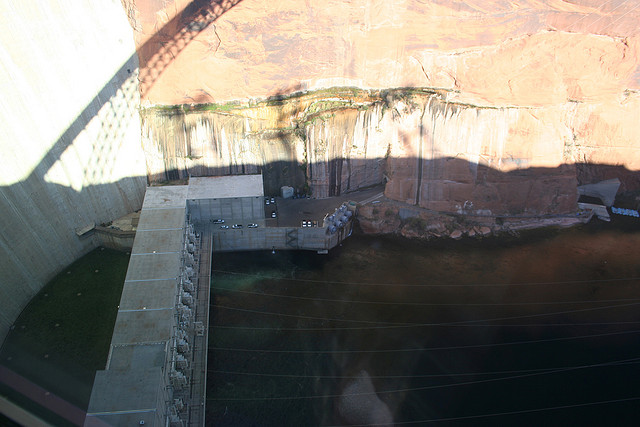

Photo of Glen Canyon Dam by Dave Higgins licensed under CC BY 2.0
When making a list of frightening possibilities, one could easily overlook aging bridges, dams, pipelines and roads that are no longer safe. People rarely worry about a bridge collapsing or a dam breaking, but events such as these are becoming all too common.
In fact, October’s heavy rains and flooding in South Carolina caused the collapse of 36 dams, several of which were more than 100 years old. There were deaths and significant destruction. In Hunt County, Texas, a bridge collapsed after heavy rains in June and in Cincinnati, the Hopple Street overpass bridge collapsed and there was at least one death.
In the 20th century, the United States became an engineering powerhouse after creating a vast interstate highway system. Now, there is little to brag about when it comes to the nation’s infrastructure.
Some progress is being made. Just hours ago, Congress approved a transportation bill that includes more than $200 billion for highway infrastructure improvements. It is the first long-term transportation funding Congress has passed in more than 10 years, and it puts an end to an almost unbelievable 36 consecutive short-term funding bills since 2009.
While this is a good first step, the bill falls far short of what is needed. Rehabilitating and replacing current infrastructure is a long and expensive process and states can’t make significant progress on critical needs under current budget restraints. And, because of federal budget uncertainty, states were delaying most large transportation-related projects. According to the American Association of State Highway and Transportation Officials (AASHTO), the total value of state highway projects that have been delayed just this year stands at more than $2 billion.
Groups throughout the nation are lobbying for transportation funding, but there is almost no clamor for the 2.5 million miles of pipelines that carry oil and natural gas throughout the country. The silence is somewhat surprising because there have been very serious incidents. Last year, more than 700 pipeline failures killed 19 people, injured 97 and caused more than $300 million in damage. Lawmakers haven’t been willing to do anything about additional funding for pipelines. Similarly, aging and leaking water pipes are costing Texas cities and counties millions of dollars. Almost half of Houston’s water pipes are much older than their 50-year life expectancy.
Spending on every type of infrastructure has stagnated nationwide. According to the Congressional Budget Office, government has collectively spent only 2.4 percent of the nation’s gross domestic product on infrastructure since 1956. AASHTO estimates that annual road and bridge spending is falling $32 billion short of the amount need.
As population growth increases and infrastructure is continually stressed, the country becomes increasingly more vulnerable and weaker in the area of global leadership. And, that may be the most frightening element of all our fears.
SPI’s team of procurement experts can help identify opportunities before they’re announced. Contact them here.
